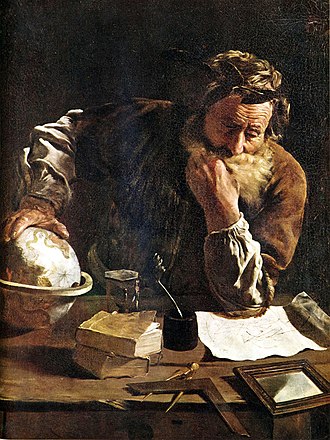|
home | what's new | other sites | contact | about |
|||||
|
Word Gems exploring self-realization, sacred personhood, and full humanity
Biology, Chemistry
Editor’s collection of notes: Mathematics Editor’s collection of notes: Chemistry Editor’s collection of notes: Physics Editor’s collection of notes: Biology
Dominic Walliman: The Map of Mathematics Dominic Walliman: The Map of Chemistry Dominic Walliman: The Map of Physics Dominic Walliman: The Map of Biology
PBS.org: "Opposite charges attract; like charges repel" is the basic truth about electricity. And because of this we are able to use the most mobile of charges, the electron, to perform a great deal of work. Electrons and Shells Electrons cluster about a proton-packed nucleus until negative and positive charges exactly match, as many electrons as protons. In fact, electrons are constrained to fill discrete energy "slots" when attracted to the neighborhood of a nucleus. The first, innermost set of slots can accommodate up to two electrons, the next eight, the next eighteen . . . the rules are complicated, but starting from closest to the nucleus each set of slots, called a shell, fills up before an electron must be kicked upstairs to the next shell. If, for example, the third shell is full (for a total of 28 electrons), but the nucleus contains 29 protons, a twenty-ninth electron will be attracted to this atomic configuration but will have to occupy a lonely outlying slot, becoming the only resident of the fourth shell. The element that fits this description happens to be copper, and its electron arrangement has some important implications for ordinary electricity: the isolated outer electron has difficulty "seeing" a positive charge at the copper atom's center. The completed shell beneath it, an evenly distributed swarm of electrons, masks the last proton's attraction. That twenty-ninth electron is, thus, loosely attached and easily dislodged. The ways in which electrons try to fill shells, sometimes sharing slots in two atoms at once (forming molecules), or flying off altogether (leaving ions behind) is the substance of chemistry and of life. This complexity, from table salt to DNA, is all about electrical charge. So is the everyday power that we tap into at a wall outlet. Michael Talbot, Holographic Universe: "Our brains mathematically construct objective reality by interpreting frequencies that are ultimately projections from another dimension, a deeper order of existence that is beyond time and space: The brain is a hologram enfolded in a holographic universe... What is 'out there' is a vast ocean of waves and frequencies, and reality looks concrete to us only because our brains are able to to take this holographic blur and convert it into the sticks and stones ... that make up our world... When a [china teacup] is filtered through the lens of our brain it manifests as a cup. But if we could get rid of our lenses, we'd experience is as an interference pattern... we even construct space and time." David Moser: "Quantum particles: the dreams that stuff is made of."
Niels Bohr: "Those who are not shocked when they first come across quantum mechanics cannot possibly have understood it." Max Planck, father of quantum physics: "All matter originates and exists only by virtue of a force … We must assume behind this force is the existence of a conscious and intelligent Mind. This Mind is the matrix of all matter." Ernest Rutherford: "All of physics is either impossible or trivial. It is impossible until you understand it, and then it becomes trivial." Hermann Joseph Muller: "To say that a man is made up of certain chemical elements is a satisfactory description only for those who intend to use him as a fertilizer." Richard Davisson: "There are no physicists in the hottest parts of hell, because the existence of a 'hottest' part implies a temperature difference, and any marginally competent physicist would immediately use this to run a heat engine and make some other part of hell comfortably cool. This is obviously impossible." Mike Adams: "Organic chemistry is the chemistry of carbon compounds. Biochemistry is the study of carbon compounds that crawl." Anonymous: "Theoretical physicist: a physicist whose existence is postulated, to make the numbers balance, but who is never actually observed in the laboratory." Anonymous: "Heisenberg might have slept here." Erwin Schrödinger, on quantum mechanics: "I don't like it, and I'm sorry I ever had anything to do with it." Democritus: "Nothing exists but atoms and the void." John A. Wheeler: "No point is more central than this, that empty space is not empty. It is the seat of the most violent physics."
This spectacular image of the large spiral galaxy NGC 1232 was obtained on September 21, 1998. The central areas contain older stars of reddish colour, while the spiral arms are populated by young, blue stars and many star-forming regions. Note the distorted companion galaxy on the left side. The distance from Earth is about 100 million light-years. NGC 1232 is about 200,000 light-years across, or about twice the size of the Milky Way galaxy.
Dr. Gary E. Schwartz, Univ. of Arizona, The AfterLife Experiments: "Years ago, when I was a professor at Yale, I stumbled on a hypothesis about how systems store information... it had led me ... to recognize the possibility that consciousness might survive after death... All systems, in the process of becoming and remaining whole, store information dynamically. Systems are composed of component parts that share information and energy -- from atoms and chemicals, through cells and organisms, to planets, galaxies, and the universe as a whole... Mathematical logic leads to the conclusion not only that all systems are 'alive' to various degrees, but also that this information continues as a living, evolving energy system after the physical structure has ceased to exist. Following the logical line of reasoning, everything I knew about physics and psychology forced me to entertain the hypothesis of living info-energy systems." Sylvia Mader, Biology: "There are various levels of biological organization. At each higher level, properties emerge that cannot be explained by the sum of the parts."
Kathleen & Arthur Talaro, Microbiology: "In the fall of 2000, scientists ... were able to isolate and grow a living bacterium that had been lying dormant and protected in a salt crystal for about 250 million years. This creature was alive even before the time of the dinosaurs... Its source was deep in an underground cavern near Carlsbad, New Mexico." Isaac Asimov, The Genetic Code: "The Pattern of Protein... [amino acid] side chains [in conjunction with the 'glycine backbone'] present a varied spectrum of properties. Some, like those of tyrosine and tryptophan, are large and bulky, while others, like those of alanine and serine, are small. Some side chains, like that of threonine, carry a hydroxyl group, others do not; some like those of aspartic acid and glutamic acid, ordinarily carry a negative electric charge, others, like those of lysine and arginine, carry a positive electric charge. Most carry no electric charge. The result is that a particular protein molecule can bristle with a pattern of side chains that may concentrate bulkiness here and not there, that may distribute negative electric charges here and positive ones there and none at all yonder. One can picture, from this standpoint, how an antibody might work. A protein could be constructed with a side-chain pattern which would just fit the side-chain pattern on a foreign protein, or on a virus or on a key spot on a bacterial surface. The fit may be one in which a negative electric charge on the antibody meets a positive one on the invading molecule, with mutual attraction; or a bulky collection of atoms on one molecule may just fit a recess on the other. In either case, antibody and prey join tightly, and the combination then becomes harmless to the body. Of course, a particular antibody with a pattern just suited to one particular sort of molecule will fit no other (or at any rate will only fit others that are extremely similar to the one for which it is suited). One can also picture how an enzyme might work. A particular enzyme could have a pattern of side chains such that two reacting chemicals will just fit conveniently into adjoining niches. Brought together by a middleman, so to speak, they will react with each other and leave, vacating the spot for another set of reactants, so that the reaction as a whole will then proceed at a far more rapid rate than it would if the enzyme were absent. Naturally, an enzyme just made to fit one set of reactants will not fit another... The number of different proteins that can be built up out of twenty-two amino acids is, for all practical purposes, unlimited. The amino acid side chains are quite enough to account for all the variety found in proteins; they are sufficient to form the basis for a phenomenon even as complex and subtle as life. In fact, they are, if anything, more than enough. Out of 40,320 possible vasopressin combinations, the body chooses just one. Out of eight octillion possible combinations of the insulin polypeptides, the body chooses just one. The question is no longer where the body finds the variety it needs, but how it controls the possible variety and keeps it within bounds."
Isaac Asimov, The Genetic Code: "The only bodies within the cell that do replicate are the chromosomes, and each individual begins life with chromosomes only. It must follow then that, within their own structure, the chromosomes possess the 'blueprint' for the manufacture of protein. This had been more or less the assumption ever since the chromosome theory of inheritance was adopted back in the early years of the twentieth century, and the assumption strengthened with the years. It was easy enough to talk of a 'gene for blue eyes,' but the gene itself didn't have blue eyes, and it didn't make blue eyes. It could only give the instructions for the production of a particular polypeptide chain that would then become the specific enzyme that would catalyze the production of a certain pigment that would give eyes a blue color. The end product might be a 'physical characteristic,' but the immediate job of the gene was to produce a particular protein." Isaac Asimov, The Chemicals of Life: Enzymes, Vitamins, Hormones: "Antibiotics are not effective against virus diseases such as measles, mumps, chicken pox or the common cold. Bacteria have enzymes of their own which can be attacked separately. Viruses, however, live inside the body's cells and use the cells' enzymes for their own purposes. To stop the enzymes which serve viruses, you must therefore stop the cells' own enzymes. That, obviously, would kill the patient."
Dale Short, on author Lee Baumann: "The larger implications of light's metaphysical shenanigans are even more mind-boggling. In God at the Speed of Light, Baumann introduces the concept with an analogy from physicist Nick Herbert: One of the main quantum facts of life is that we radically change whatever we observe. Legendary King Midas never knew the feel of silk or a human hand after everything he touched turned to gold. Humans are stuck in a similar Midas-like predicament: we can't directly experience the true texture of reality because everything we touch turns to matter. In other words, our everyday lives are technically an illusion. The objects and surfaces that we perceive as real are only the temporary intersection of our consciousness with the 'true' universe, made entirely of energy. 'Which raises the question of this wooden floor,' Baumann adds, tapping it with his heel. 'If we weren't here looking at it, would this floor still exist? Well, it would, but it exists only as a nebulous, ill-defined mass of wave forms. It's not until some type of measurement or observation occurs, and you have what's called "the collapse of the wave function," that the nebulous mass of waves solidify into concrete, particulate matter.'" Richard Feynman, speaking of the Double-Slit Experiment: "We choose to examine a phenomenon which is impossible to explain in any classical way, and which has in it the heart of quantum mechanics. In reality, it contains the only mystery." Niels Bohr: "The common sense view of the world, in terms of objects that really exist 'out there' independently of our observations, totally collapses in the face of the quantum factor." Niels Bohr: "An independent reality, in the ordinary physical sense, can neither be ascribed to the phenomena nor to the agencies of observation." Werner Heisenberg: "If one wants to give a description of the elementary particle, the only thing that can be written down as description is a probability function. But then one sees that not even the quality of being belongs to what is described." Stephen Jay Gould: "There has been no biological change in humans in 40,000 or 50,000 years. Everything we call culture and civilization we've built with the same body and brain." John D. Barrow, Theories of Everything: The Quest for Ultimate Explanation: “Impressed by the success of high-level mathematics in the formulation of the general theory of relativity in 1915, we find that Einstein's life-long quest for a unified field theory was dominated by the search for more general mathematical formalisms that could bring together the existing descriptions of gravity and electromagnetism. We find none of Einstein's compelling thought experiments and beautifully simple physical reasoning that lay at the heart of his early success. As the last quotation tells, he had become convinced that by pursuing mathematical formalisms alone, the compelling simplicity of a unified description of the world would become inescapable.”
John D. Barrow, Theories of Everything: The Quest for Ultimate Explanation: “One of the most striking properties of the visible universe is the preponderance of matter over antimatter. Although particle accelerators produce matter and antimatter in equal abundances quite routinely and there is a democratic relationship between the two, we see no antiplanets, no antistars, no antigalaxies, and there is no evidence of any antimatter in the cosmic rays that come from outside our solar system. Nor do we see any evidence of the wholesale annihilation of matter and antimatter which would erupt anywhere in the Universe where the two came into contact. Thus, for some mysterious reason, there exists a form of cosmic favouritism. The observable universe is made of matter rather than antimatter. The other thing that it most obviously consists of is radiation. Indeed, on a straight count the photons have it; for there are on the average about two billion photons of light to be found for every proton in the Universe. Since every time a proton meets an antiproton and annihilates, two photons of light are produced, we can see that a universe such as ours, possessing about two billion photons for every proton, needs to have arisen from a hot dense state in which there were on average a billion and one protons for every billion antiprotons. A billion antiprotons knock out a billion protons producing two billion photons for every left-over proton. But why should the early Universe possess such a weird skewness of matter over antimatter to start off with?” John D. Barrow, Theories of Everything: The Quest for Ultimate Explanation: “Science is predicated upon the belief that the Universe is algorithmically compressible and the modern search for a Theory of Everything is the ultimate expression of that belief, a belief that there is an abbreviated representation of the logic behind the Universe's properties that can be written down in finite form by human beings.” John D. Barrow, The Book Of Nothing: “One of Nature's deep secrets is the fact that the outcomes of the laws of Nature do not have to possess the same symmetries as the laws themselves. The outcomes are far more complicated, and far less symmetrical, than the laws. Consequently, they are far more difficult to understand. In this way it is possible to have a Universe governed by a very small number of simple symmetrical laws (perhaps just a single law) yet manifesting a stupendous array of complex, asymmetrical states and structures that might even be able to think about themselves.”
|
|||||
|
|
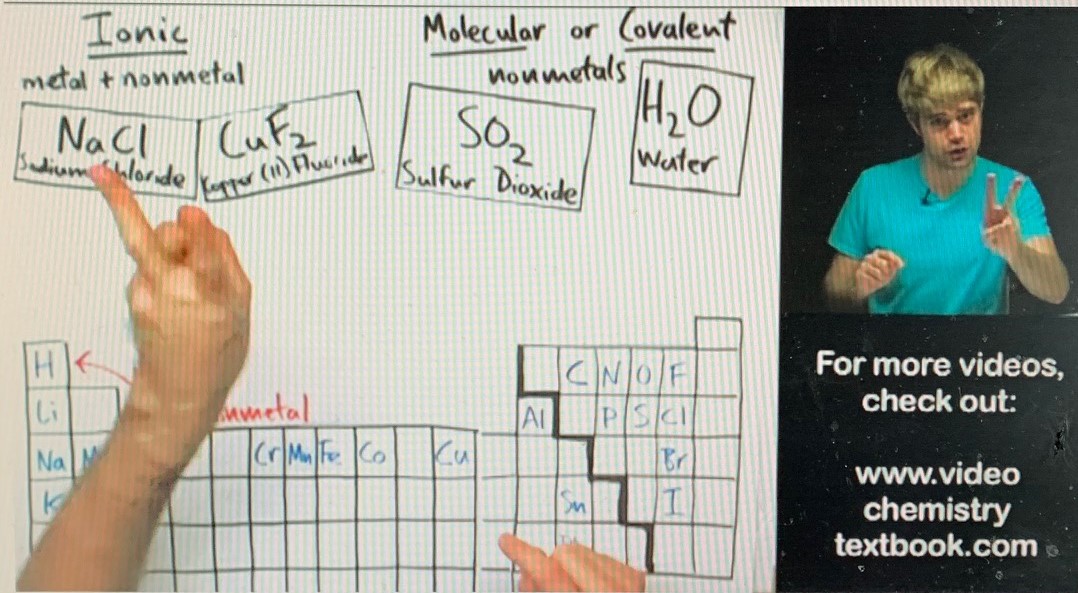
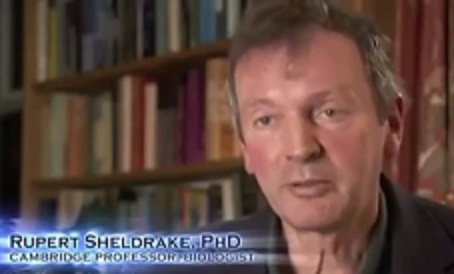
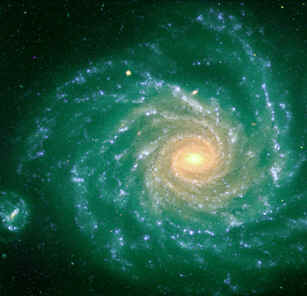
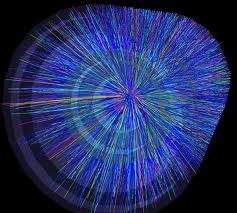
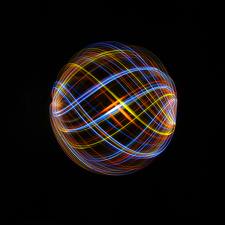
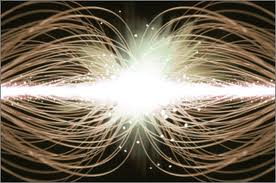
.jpg)

